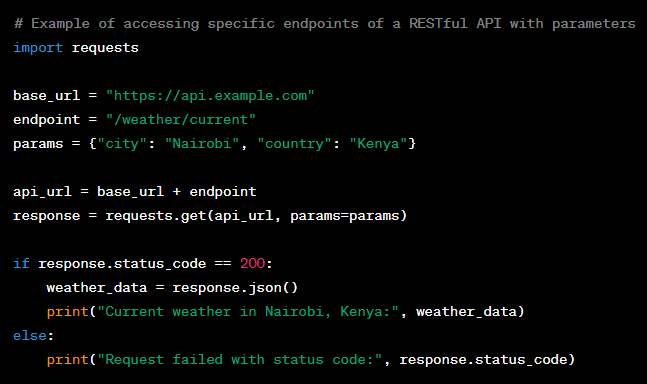1. Introduction
1.1 What is an API?
An API, or Application Programming Interface, is a set of rules and protocols that allow one software application to interact with another. It serves as an intermediary that defines how software components should communicate. APIs can be found in virtually every corner of the digital world, from mobile apps and websites to cloud services and operating systems.
1.2 The Purpose of APIs
APIs are used to enable the integration and interaction of different software systems. They provide a standard way for developers to access the functionality and data of another application or service without needing to understand its internal workings. This facilitates modularity and reusability in software development.
1.3 Types of APIs
There are various types of APIs, including:
Web APIs: These are accessed over the internet and follow specific protocols such as HTTP. REST, SOAP, and GraphQL are popular web API architectures.
Library or Framework APIs: These APIs are part of a programming library or framework and offer pre-built functions and classes that developers can use to build applications.
Operating System APIs: They allow applications to interact with the underlying operating system, providing access to hardware and system resources.
Hardware APIs: These APIs enable software to communicate with hardware devices like sensors, cameras, and printers.
2. How APIs Work
2.1 Request and Response
APIs work on a request-response model. One application sends a request to the API, specifying the operation it wants to perform and any required parameters. The API processes the request and sends a response back to the requesting application, often in a standardized data format like JSON or XML.
2.2 Authentication and Authorization
To ensure security and controlled access, APIs often require authentication to verify the identity of the requester. Authorization mechanisms define what actions or data the requester is allowed to access.
**2.3 API Endpoints
**APIs are structured with specific endpoints that correspond to different operations. For example, a weather API might have endpoints for getting the current weather, the forecast, and historical data. Each endpoint serves a particular purpose and accepts specific parameters.

3. Common API Protocols
3.1 REST
Representational State Transfer (REST) is a popular architectural style for designing networked applications. RESTful APIs use standard HTTP methods like GET, POST, PUT, and DELETE for communication and are known for their simplicity and scalability.
3.2 SOAP
Simple Object Access Protocol (SOAP) is a protocol for exchanging structured information in the implementation of web services. It is a more rigid and complex protocol compared to REST.
3.3 GraphQL
GraphQL is a query language for APIs that allows clients to request precisely the data they need, reducing over-fetching and under-fetching of data. It offers flexibility and efficiency in data retrieval.
4. API Design Best Practices
**4.1 Versioning
**APIs should support versioning to ensure that changes or updates do not break existing client applications. Versioning allows multiple versions of an API to coexist and evolve independently.
4.2 Rate Limiting
Rate limiting prevents abuse of an API by restricting the number of requests a client can make in a given time frame. It helps maintain service quality and availability.
4.3 Error Handling
APIs should provide clear and informative error messages, helping developers understand and address issues effectively.
Conclusion
In this technical guide, we've uncovered the critical role of APIs in modern software development. From request-response mechanisms to security and best practices, APIs serve as the backbone of digital connectivity. Emphasizing documentation, testing, and microservices integration, APIs enable scalable and efficient applications. Looking ahead, emerging trends like serverless, AI-powered, and IoT APIs promise to shape the future of software development, reinforcing APIs as the cornerstone of digital innovation.











Top comments (0)